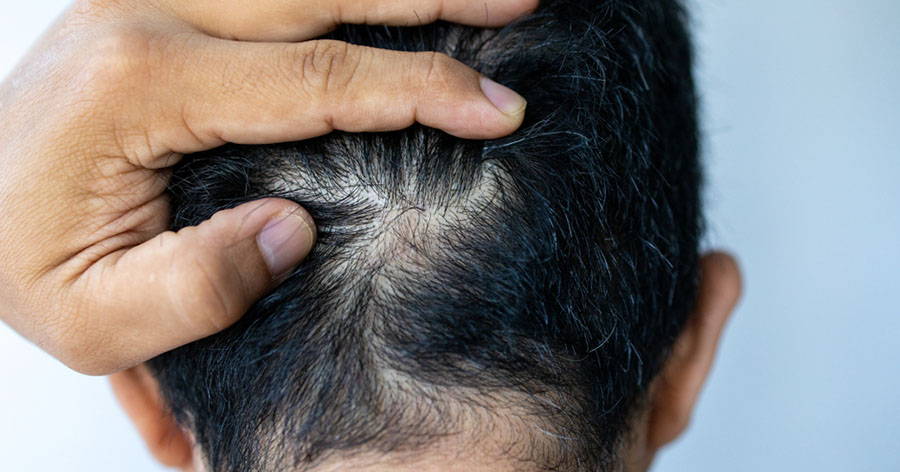Whether you have a condition like the ones above, are wondering how much hair loss is normal when washing your hair, or are simply looking for ways to grow thicker, healthier locks, it is time to start your journey. Discover the most common hair regrowth terms, as well as which types of hair therapy are best for your personal hair loss goals.
Androgenetic Alopecia
One of the most common forms of hair loss is androgenetic alopecia (AA). For men, it is often referred to as male-pattern baldness. When AA occurs, hair loss develops in a characteristic pattern. For men, it usually begins above both temples and proceeds on to form an “M” shape on the head. In women, AA looks a little different. Instead of receding at the hairline, the hair thins all over the scalp. Most women will never experience complete baldness, but it can occur in men.
There are many ways to treat AA, but it should be done as soon as possible. While the condition can cause changes in your appearance, it has also been associated with medical conditions like heart disease, polycystic ovary syndrome (PCOS), and high blood pressure. If you think you may have male pattern baldness or the female form of AA, talk to your primary care physician. While they check that you are in good health, you can discuss your preferred choices for hair loss treatment.
Vellus Hair
In contrast to the terminal hairs that are on your head, vellus hair is the fine hair that you will find on most of your body. If you experience hair loss on your scalp, you probably will still retain the vellus hair that is growing on areas like your arms, legs, and face. When you experience one of the most common causes of hair loss and seek solutions for hair regrowth, your terminal hair may return as vellus hair first.
While it is possible for your hair to transition back to terminal on its own, you may need hair regrowth treatment to replace fine hairs with thicker, more substantial ones. Feel free to consult with your physician about the best options for your condition. In some cases, vellus hair can turn back to terminal hair in a matter of weeks. Other cases will take several months.

Understanding How Hormones Can Affect Hair Loss
How Psoriasis Can Affect the Scalp & Your Hair Growth